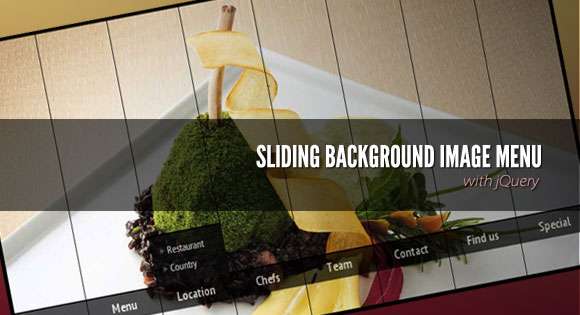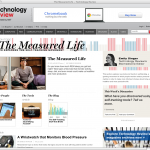Funny business, this. My career spun, substantially, on the first launch of the space shuttle, back in ’81. I was a staff shooter at ABC TV in NY, which was definitely an odd duck of a job. As a still shooter bound up in an organization whose reason to be was making moving pictures, I was often the odd man out, or certainly the last consideration. (It was good I got used to that feeling early in my career:-)
I got sent down to the Cape for ABC to photograph the test firing of Columbia’s engines, and to identify lens throws and positions, work out the credentialing path, and all that stuff you do to prep for a major media blowout. As it happened, Discover, the new Time Inc. science magazine, had a crew of three shooters down there, and all was not well with team Discover. Two of the team members came back to NY, and told their editor, “We need a new third. Hire McNally.â€
I was already shooting for the magazine as a freelancer, so the photo editor had no qualms. She called me up and offered me the gig shooting launch and landing. It amounted to about two weeks of freelance day rates, which at the time was the princely sum of $250 per day. I walked into my boss’ office at ABC and quit.
In the early days of the launches and landings, I spent a lot of time in Cocoa Beach, Houston, and out in the desert of Edwards AFB, where they landed the first few. Cocoa at that point was a rusty old space town at the end of the Bee Line Expressway. We would ship roughly 40-50 cases of gear down, and pick ‘em up at air freight. Heavy tripods, wiring, rigging, long glass, 20 or so motor driven Nikons, timers, scopes, film, hi-speed Hulcher cameras, you name it. You shot multiple, multiple cameras, ’cause, as they say, once they light those SRBs (solid rocket boosters) that puppy’s goin’ somewhere, and you don’t want to come up empty.
It was exhausting, but fun, and there was a great sense of launch fever in those heady early days. We would stay in a dogshit Days Inn, eat shoe leather steaks at the Mousetrap, and listen to Shirl the Girl on the piano. One of our team, Hank Morgan, remains a friend to this day. He was a pro’s pro, and I learned much from him. Nothing he couldn’t do with a camera. He didn’t get rattled, which was an essential quality, shooting these launches. The rocket fires, the noise rolls along with the smoke plume, and, like a monster Roman candle, the spaceship climbs, achingly slow at first, towards the heavens. You are 2-3 miles away, on a tower, with a three camera platform, most likely with a 1,000mm, a six and a five on what was at that point, F2′s. You had a single handle push on the platform, and all three cameras would be wired into a foot pedal. Your job was to track with the longest lens. If you did that smoothly, the six hundred and the five hundred (effectively, your wide angles) would also stay on track. Hitch or bobble, you would never again find the shuttle in all that sky with 1000mm of glass clapped to your eye.
Seat of the pants ruled the day, for photogs, and, I suspect, NASA. I love odd shit, so one early morning, I was in hog heaven, photographing Challenger as it was towed through the streets of Palmdale, Ca.
You can’t make this stuff up, right? You look out your window, and there goes the space shuttle.
Down at Houston, I got to photograph a silica space shuttle tile. These conduct heat so poorly, they cover part of the shuttle’s exterior, protecting it from the high temps of re-entry. This tile, glowing hot and fresh from the oven, is being held by unprotected fingers, demonstrating its’ lack of heat transfer. Strange and remarkable stuff goes into this flying cargo ship.
The first landing was rough. Nobody knew what this thing would look like coming down out of space. Dropping like a rock, approaching at an angle so steep the pilots were virtually looking straight down, the only thing we knew as shooters was that whatever happened would happen fast. I had knocked around doing conventions and political coverages, so the editor wanted me on the longest glass. It wasn’t the prime spot, but it was the spot from which you could track the whole shebang. I was on the roof of the old fire station at Edwards with an ancient 1200mm lens, which came in two parts that you screwed together. With the shade, it extended maybe 5-6′ from the camera, and it was a bear to focus in the best of conditions, much less through desert heat waves. I had the whole thing wrapped in aluminum foil, for fear the 100 plus degree heat would just melt it right into the roof.
And there it is. Close as I got, through 1200mm of ancient glass. The hard part was picking it out of the sky, ’cause it was, at first, just a glowing speck in a sea of blue. I had one camera on the lens, and another looped around my neck, ready to slam it on. (Remember, only thirty six exposures.) I did better later, when I took a large ABC news sticker I still had in my bag, slapped it onto the hood of my car and drove past Edwards security right onto the runway. Having a TV sticker could get you lots of places back in the day.
Scouting Edwards for approach positions was fun. Miles of open desert, and they pretty much let us have the run of the place. Not that there was anything out there. Hank, driving his own rental car, gave me one of those twisted, “I’m about to do something really fun and stupid†looks and brought the hammer down out there in the big empty. I was in a Buick Regal, and had no choice but to respond. My problem was that I was driving into his dust cloud at about 110 mph and could see absolutely nothing. It occurred to me that this was not advisable when heard an enormous crack from under the car. Desperately looking around, I noticed my gas gauge plummeting. I had driven right over a large, pointed rock embedded in the desert, and it basically plowed a furrow right through the gas tank. I pulled up and started yanking gear out of the trunk like the crazy fool I was and Hank, thankfully, circled back to pick me up. We moved away from the vehicle as it was slowly encircled in a sea of gasoline. I called the rental company and told them their car had malfunctioned and I needed a new one, which they obliged me with. They in turn called me back about two days later to tell me they had yet to find my vehicle. I assured them it was out there, gulping a bit and wondering how I could finesse a Buick Regal on my expense account. I never heard back.
It has been, as they say, quite a ride….more tk….


















































 Emily Singer, a journalist with MIT’s Technology Review, has an extensive series of articles and interviews on “
Emily Singer, a journalist with MIT’s Technology Review, has an extensive series of articles and interviews on “